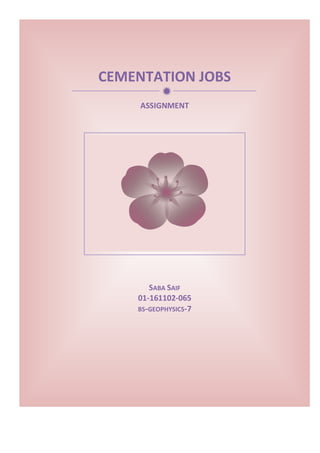This document discusses cementation jobs in oil and gas wells. It begins by explaining the objective of cementing wells, which is to isolate zones and support the casing. It then describes how cementing works, including preparing the cement slurry, pumping it down the casing using plugs, and allowing it to harden. The document discusses primary cementing techniques like single-stage and multi-stage cementing. It also covers API cement classifications and discusses the use of additives like accelerators, retarders, and fluid loss additives. In summary, the document provides an overview of the cementing process and various techniques used to isolate zones and support casing in oil and gas wells.














